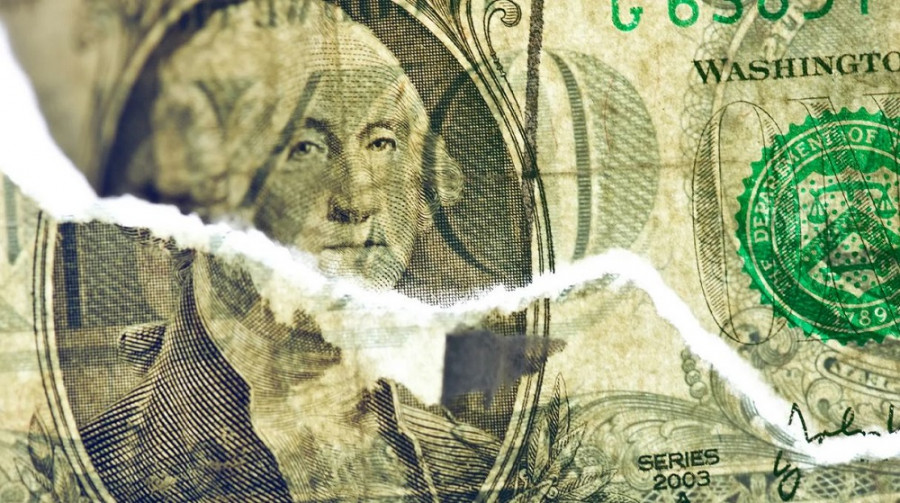The EUR/USD pair hit an 8-month price high on Wednesday, marking a level of 1.1048. For the second consecutive day, traders are trying to consolidate within the 1.10 figure, reacting to the inflation reports released in the U.S. On Tuesday, we received the Producer Price Index and the Consumer Price Index on Wednesday. Both reports were unfavorable for the U.S. currency, leading the U.S. Dollar Index to test the 101 figure again. To the disappointment of dollar bulls, inflation did not serve as a lifeline for the greenback. On the contrary, inflation reports have become an anchor for the dollar, both "in the moment" and (at least) in the medium term.

So, the overall CPI on an annual basis fell into the "red zone," coming in at 2.9% against a forecast of 3.0%. This is the slowest growth rate since March 2021. The index has decreased for the fourth consecutive month, indicating a clear trend. The core index, excluding food and energy prices, slowed to 3.2%. There is also a noticeable trend, as the indicator has been falling for four months.
The report's structure reveals that new cars have become 1% cheaper (down 0.9% in June), while used cars have dropped by 10.9% (following a 10.1% decline the previous month). The rate of price growth for transportation services slowed to 8.8% (after rising 9.4% in June), and clothing prices grew by 0.2% (down from 0.8%). Food prices remained unchanged at 2.2%. Energy costs increased by 1.1% (up 1% in June), but gasoline fell by 2.2% (previously down 2.5%).
The CPI report released on Wednesday adds to the overall picture, following earlier reports on the PPI and wages. On Tuesday, it was revealed that the overall PPI rose by only 2.2% year-over-year in July (forecast 2.3%). This is the first slowdown after five months of consecutive increases. The core PPI also fell into the "red zone," at 2.4% year-over-year in July (forecast 2.7%). The indicator had accelerated for the last three months, but growth rates slowed sharply in July.
In addition, the July Non-Farm Payrolls report indicated that average hourly earnings grew by only 3.6% (forecast 3.8%). This is the slowest growth rate since May 2021.
In other words, inflationary pressures in the U.S. continue to ease, and the market has reacted accordingly. According to CME FedWatch tool data, the probability of a 25-bps rate cut at the September meeting has risen to 54.5%, while the likelihood of a 50-bps cut is 45.5%.
The reaction of the EUR/USD pair was swift: the price surged nearly 150 pips over two days and is now trying to consolidate around the target level of 1.1050 (whereas before the release of inflation reports, the pair was drifting near the base of the 9th figure).
What do the latest figures indicate? Primarily, the Federal Reserve will begin to ease monetary policy in September. The only question is how much. The balance may tilt towards a 50-bps scenario after releasing the core PCE index for July (expected at the end of August) and August's Non-Farm Payrolls (to be published in early September). The outcome of these two releases will clarify how aggressively the Fed will ease monetary policy. However, the fact that the central bank will start easing monetary policy is not up for debate.
Meanwhile, the European Central Bank is puzzled by the latest inflation data in the Eurozone. To recap, the overall CPI in the Eurozone accelerated to 2.6% in July (from 2.5% in June), while the core CPI remained at the previous month's level, i.e., 2.9% (forecast was a decline to 2.8%). Inflation indicators also accelerated in Germany.
Inflation remained "stubborn" amid stronger GDP growth data for the Eurozone in the second quarter: the economy grew by 0.3% quarter-on-quarter and 0.6% year-on-year (growth has been recorded for three consecutive quarters). This situation suggests that the ECB might not rush into the next round of rate cuts—at least not in September. Such speculations have been increasingly heard in the market recently. The impending divergence between ECB and Fed rates supports EUR/USD buyers.
From a technical perspective, the pair on the H4, D1, and W1 timeframes is at the upper line of the Bollinger Bands indicator and above all lines of the Ichimoku indicator, which is showing a bullish "Parade of Lines" signal on the daily chart. Downward pullbacks are advisable for opening long positions. The main target for the upward movement is the 1.1100 level, which corresponds to the upper Bollinger Bands line on the MN timeframe.











